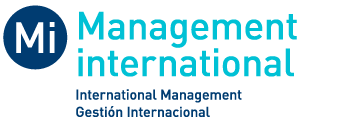Types of publication
The journal Mi publishes scientific contributions that address general management issues on an international scale. Such contributions can include the following types of publications :
Articles
Articles are manuscripts that address a research issue and include a review and discussion of literature, a research method, results and discussions, with the ultimate goal of contributing to the body of knowledge in the field.
RESEARCH NOTES
Research notes are manuscripts of a theoretical nature that encourage debate, deepen empirical analysis or propose a taxonomy for the purpose of verifying, re-examining published research, discussing results obtained by other authors, formulating new hypotheses, or suggesting innovative research methods.
Articles and research notes are peer reviewed based on the principles, rules, and practices of double-blind peer reviews. Reading notes and summaries are evaluated by the editorial committee
Submissions should be sent by email to management.international@hec.ca
READING NOTES
Reading notes are texts devoted to critical analyses based on recent works with the goal of fostering debate on current issues.
REVIEWS
Texts that are devoted to concise presentations of recent works with the goal of drawing Mi readers’ attention to themes deemed relevant by the journal’s editorial committee.
Publications – Helpful tips
Ils doivent être courts et ne pas faire l’objet d’une numérotation (I, II A, B, etc.).
Ils sont numérotés et présentés sur des feuilles à part. L’emplacement de ces tableaux doit être clairement indiqué dans l’article.
Les tableaux, graphiques, organigrammes et dessins doivent être noirs sur fond blanc.
Sous forme de notes : Elles sont numérotées et présentées en bas de page. Ici aussi, on ne mentionnera que le nom, la date et, le cas échéant, les pages appropriées.
Article dans une revue :
Yan, Li, and Taïeb Hafsi. “Philosophy and management in China: An historical account.” Management international/International Management/Gestiòn Internacional19.2 (2015): 246-258
Article dans un recueil :
Denis, Jean-Philippe, Taieb Hafsi, and Alain Charles Martinet. “Encyclopédie de la stratégie.” Economica, Paris (2014)
Publications – Helpful tips
Your submission must include a version with the authors’ names and an anonymous version, a document with tables, graphs, and other such items, and a document with biographical sketches for the authors.
LENGTH AND PRESENTATION OF SUBMISSIONS
Articles are limited to 60,000 characters (spaces included) or 30 pages (including references – tables, figures and appendices not included), double spaced, US letter format (215.9 × 279.4 mm), 12 pt font.
Research notes are limited to 60,000 characters (spaces included) or 30 pages (including references – tables, figures and appendices not included), double spaced, US letter format (215.9 × 279.4 mm), 12 pt font.
Reading notes are limited to 20,000 characters (spaces included) or 10 pages (including references) double spaced, US letter format (215.9 × 279.4 mm), 12 pt font.
Reading note summaries are limited to 10,000 characters (spaces included) or 5 pages (references included) double spaced, US letter format (215.9 × 279.4 mm), 12 pt font.
author details
Authors’ names must appear on the first page in the desired order of publication.
For each name, the following information must be provided:
- Title
- Complete affiliations
- Email address
Manuscript title
The title must be short, concise and precise.
Abstract
Each article and research note must include an abstract structured as follows:
- Present the research question or the objective
- Design, methodology or approach
- Research results and contribution
The maximum length of an abstract is 120 words.
Key Words
A maximum of 6 key words can be used.
acknowledgements
Acknowledgements are presented on the first page and must include the names of all persons who contributed to writing or improving the manuscript as well as references for any research materials used.
headings and sub-headings
These must be short and be free of any kind of numbering (I, II A, B, etc.).
Heading and sub-heading levels must be clearly identified in Word. The following structure must be used for submissions:
Heading 1
14 pts, centred, bold)
Heading 2
(12 pts, small upper case, bold)
Heading 3
(12pts, bold)
Heading
(12pts, italics)
tables, graphs, organizational charts, map
These are numbered and presented in a separate document. The layout of tables, figures, graphs, organizational charts, diagrams, images and other such items must be clearly indicated in the article.
- Tables, figures, graphs, organizational charts, diagrams, and images must include a heading and clear numbering, and cannot be submitted in image format.
- Images must be submitted in high resolution in the following formats: ai, .eps, .jpeg, .bmp, and .tif.
- Graphs, figures, diagrams, organizational charts taken from online software must be submitted in PDF format.
Citations
Citations that exceed five lines must be presented in a paragraph with five-space indentation and no quotation marks.
Citations in the body of the text must be presented in italics and with quotation marks.
REFERENCES
In-text:
1 author: Author, date (Dupont, 2017) or (Dupont, 2017; Smith, 2019; Faucher, 2020) or (Dupont, 2017, p.10)
2 authors: Author 1 & Author 2, date (Dupont & Smith, 2013) or (Dupont & Smith 2012; Dupont 2010)
3 or more authors: Author 1 et al., Date (Dupont et al., 2012)
BIBLIOGRAPHY
APA format is requested:
Article in a journal:
Yan, L. & Hafsi, T. (2015). Philosophy and management in China: an historical account. International Management / International Management / Gestiòn Internacional, 19(2), 246–258. https://doi.org/10.7202/1030398ar
Book:
Denis, J.-P., Hafsi, T. & Martinet, A. C. (2014). Encyclopédie de la stratégie. Economica, Paris.
third-party copyright permissions
The author of the article must identify the copyright holder and request their permission in writing. You must keep the written permission you receive and make sure there is no time limit on it, as your published article will be around for a while.
